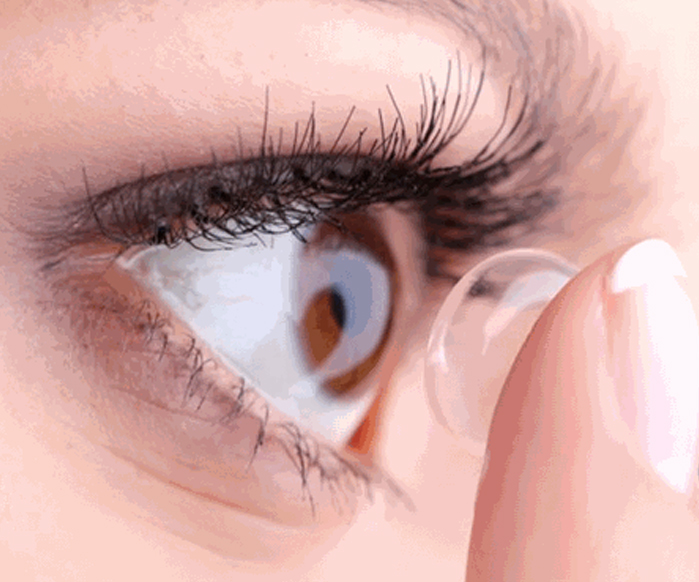
Transparent lenses placed on the cornea that can remain in the eye for an extended period are called contact lenses or simply lenses. Before wearing contact lenses, necessary examinations by an eye doctor are essential. Various measurements related to the curvature of the cornea are taken to ensure the compatibility of the lens with the eye. Serious side effects are rarely encountered with contact lenses. The abrasive effect of contact lenses may occur due to prolonged wear, but with proper use and a certain adaptation period, most problems are often resolved.
Hard Lenses
No longer produced or used.
Soft Lenses
Flexible soft lenses made from artificial organic compounds like hydroxyethyl methacrylate have significant advantages over hard lenses. They are easier to wear, and the adaptation period is shorter. They can stay in the eye for an extended period without causing swelling of the cornea. These lenses are comfortable to use, and currently, 95% of lens users worldwide use them. The adaptation period to these lenses is very short. Like all lenses, the crucial issue is to adhere to hygiene rules. It is necessary to wash hands thoroughly before putting on or taking off lenses.
Eye infections related to contact lens use can lead to painful wounds (corneal ulcers) that are difficult to heal on the outer surface of the cornea. Corneal ulceration can result in permanent damage and associated vision loss. Therefore, redness and pain in the eyes, regardless of the lens type, are symptoms that require immediate consultation with an eye doctor.
Gas Permeable Rigid Lenses
Gas-permeable rigid lenses are made from materials like pure silicone or cellulose acetate butyrate. Although they resemble hard lenses in terms of high image quality, durability, and ease of cleaning, they allow the passage of oxygen and carbon dioxide through their surface. Since the cornea lacks blood vessels, oxygen requirements are met through direct respiration with the surrounding air, making gas permeation a crucial aspect. Gas permeable rigid lenses are more flexible than hard lenses and conduct heat more efficiently, providing significant advantages for extended use. They fall between soft lenses and hard lenses in terms of comfort rating.
In addition, gas-permeable hard lenses are more flexible than hard lenses and also conduct heat more easily. These features are significant advantages for prolonged use. Gas-permeable hard lenses rank between soft lenses and hard lenses in terms of comfort.